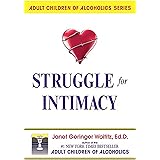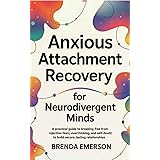The ubiquity of the internet in modern life has revolutionized how individuals work, learn, socialize, and entertain themselves. As adeptly discussed in the video above by Dr. Jeff Gardere, Ph.D., almost every aspect of daily existence can now be navigated from the comfort of a computer or mobile device. This exponential growth in online engagement, dating back to the mainstream adoption of the web in the 1990s, has naturally led to a blurring of lines between normal, productive digital use and potentially problematic, compulsive behaviors. Consequently, a crucial question arises: at what point does frequent internet engagement transition into internet addiction, a condition warranting careful consideration?
While the internet offers unparalleled convenience and connectivity—serving vital roles in education, professional development, and maintaining long-distance relationships—its pervasive nature means that discerning excessive use from necessary interaction can be challenging. Reports suggest that a significant portion of the population, estimated between 5 to 10%, may experience symptoms consistent with compulsive internet use. Although this phenomenon is still under evaluation and has not yet been formally recognized as a distinct psychological disorder by the broader medical community, its profound impact on an individual’s school performance, work productivity, personal relationships, and overall daily functioning is undeniable.
Understanding Compulsive Internet Use
Compulsive Internet Use, often referred to as Internet Addiction, is characterized by an individual’s inability to control their internet usage, leading to significant distress or impairment. It is understood that this condition, while not classified identically to substance use disorders, shares many behavioral characteristics with other forms of addiction. The intense desire to be online, coupled with an inability to reduce or cease usage despite negative consequences, forms the core of this challenge. Such behaviors are observed across various online activities, from social media engagement and gaming to online shopping and information seeking.
Moreover, the absence of formal diagnostic criteria from major psychiatric manuals, such as the DSM-5, does not diminish the clinical reality faced by many individuals. Clinicians and researchers frequently observe patterns of behavior that mirror established addictive disorders, necessitating intervention. The evolving understanding of digital habits and their psychological ramifications continues to shape the discourse surrounding internet addiction, with ongoing research actively exploring its neurobiological underpinnings and behavioral manifestations. Therefore, while formal recognition is awaited, the practical need for addressing problematic internet engagement is widely acknowledged within the mental health field.
Recognizing the Signs of Internet Addiction
Identifying internet addiction often involves an assessment of behavioral patterns and emotional responses linked to online activities. Several key indicators, as highlighted in the accompanying video, are commonly observed in individuals struggling with compulsive internet use. These signs collectively point towards a pattern where digital engagement begins to supersede real-world responsibilities and relationships, creating a cycle of dependency.
Consideration should be given to the following symptomatic expressions:
- Persistent Guilt and Neglect: Feelings of remorse or culpability often arise concerning the amount of time spent online. This guilt is frequently accompanied by the neglect of significant real-world duties, such as academic assignments, professional tasks, or household chores. Family and friends may be overlooked as digital interactions take precedence.
- Preoccupation and Craving: A significant portion of an individual’s thoughts may be consumed by internet use, even when offline. Plans may be formulated to gain internet access, and intense cravings for online interaction can be experienced, similar to withdrawal symptoms observed in other addictions.
- Anxiety, Irritability, or Depression When Offline: A marked shift in mood, characterized by feelings of unease, frustration, or sadness, can occur when internet access is unavailable or restricted. These emotional states are often alleviated only upon re-establishing a connection.
- Deception Regarding Online Time: Individuals may engage in secretive behaviors, including lying to loved ones about the actual duration or nature of their internet activities. This secrecy is often driven by shame or a desire to avoid confrontation regarding their digital habits.
- Repeated Failed Attempts to Limit Use: Efforts to reduce or control internet screen time are typically met with failure. Despite a genuine desire to cut back, the compulsion to connect online proves overwhelming, leading to a sense of powerlessness.
Risk Factors for Excessive Online Engagement
Certain individuals are considered to be at an elevated risk for developing internet addiction, often due to pre-existing psychological vulnerabilities or specific life circumstances. The interplay of these factors can create a fertile ground for compulsive online behaviors to take root and flourish. Understanding these predispositions is critical for both prevention and intervention strategies.
For instance, individuals diagnosed with depression, anxiety disorders, or other mental illnesses are frequently observed to be more susceptible to excessive internet use. The internet can serve as an accessible, albeit temporary, escape from distressing emotional states or overwhelming real-world pressures. In these cases, online engagement may function as a maladaptive coping mechanism, providing a sense of comfort, distraction, or perceived social connection that is lacking elsewhere.
Furthermore, those with a history of other addictive behaviors, including gambling, sex, or pornography addiction, may also be at higher risk. A propensity for seeking immediate gratification or an established pattern of compulsive behavior can easily transfer to the digital realm. Loneliness and social isolation represent another significant risk factor; individuals who perceive themselves as having few friends or limited opportunities for in-person socialization may turn to online platforms to fulfill their need for connection, sometimes leading to an over-reliance on virtual interactions.
Strategies for Managing Digital Habits and Promoting Digital Wellness
For those concerned about their internet usage, various proactive strategies can be employed to foster healthier digital habits and promote overall digital wellness. The goal is not necessarily complete abstinence from the internet, but rather achieving a balanced and intentional relationship with technology. Several approaches can be integrated into daily life to regain control over screen time.
Consideration should be given to implementing the following:
- Prioritize Real-World Connections: Actively schedule time with friends and family members. Engagement in face-to-face interactions, such as meeting for coffee, going for a walk, or participating in group activities, can help fulfill social needs more authentically than purely online interactions. It is often recommended that digital devices, such as smartphones, be intentionally left behind during these outings to minimize distraction.
- Establish Structured Online Hours: Designate specific blocks of time during which internet use is permitted. This involves creating a digital schedule and adhering to it rigidly. Identifying ‘must-do’ online tasks, like responding to essential emails or paying bills, and completing them within these designated periods can ensure productivity without excessive browsing. Utilizing timers can be an effective tool to enforce these self-imposed limits, ensuring that online sessions conclude as planned.
- Implement Digital Detox Periods: Regularly engage in periods of complete disconnection from the internet and digital devices. This might involve an hour before bedtime, a full day each week, or even short breaks throughout the day. Such detoxes allow the mind to rest, encouraging engagement with non-digital hobbies, nature, and self-reflection.
- Cultivate Mindful Internet Use: Before logging on, pause and consider the specific purpose of going online. Is it for work, connection, learning, or simply to pass time? This mindful approach helps to prevent aimless browsing and reinforces intentional digital consumption. Awareness of triggers that lead to excessive use can also be developed, allowing for proactive coping mechanisms to be put in place.
When Professional Guidance is Indicated
While self-help strategies can be effective for many, it is acknowledged that some individuals struggling with internet addiction may require professional intervention. If repeated attempts to modify internet usage patterns prove unsuccessful, or if the negative impacts on one’s life become severe and unmanageable, seeking the expertise of a mental health professional is strongly recommended. Such professionals possess the knowledge and tools to accurately assess the situation and provide tailored support.
A mental health professional, such as a psychologist, psychiatrist, or addiction counselor, can offer a range of therapeutic approaches. Cognitive Behavioral Therapy (CBT), for instance, is frequently employed to help individuals identify and modify the thought patterns and behaviors that contribute to compulsive internet use. Additionally, underlying mental health conditions, such as depression or anxiety, which often co-occur with internet addiction, can be comprehensively addressed. Treatment plans may also incorporate group therapy or family counseling, offering a supportive environment for recovery and fostering healthier communication around digital habits. It is imperative that individuals do not hesitate to seek help, as professional guidance can significantly improve outcomes for those navigating the complexities of internet addiction.











